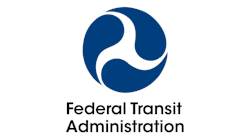OP-ED: Happy (belated) 57th birthday to the Federal Transit Administration
Many remember late President Lyndon Johnson for succeeding President John F. Kennedy after his assassination in Dallas, Texas, on Nov. 22, 1963. Others remember him for his domestic Great Society Program, which included Civil Rights, Medicare, Medicaid, the War on Poverty, Public Broadcasting and as a friend of Israel. There was also other foreign policy, most notably the Vietnam War. Few remember his other landmark legislation. This was the foundation for federal financial support of public transportation.
This July marks the 57th anniversary of federal government support for public transportation. The success of public transportation can be traced back to one of President Johnson's greatest accomplishments, which continues benefiting many Americans today. On July 9, 1964, he signed the "Urban Mass Transportation Act of 1964" into law. Subsequently, this has resulted in the investment of several hundred billion dollars into public transportation. Funding was provided under grants from the Urban Mass Transportation Administration, which in 1991 became the Federal Transit Administration (FTA).
In the current federal fiscal year 2021, the FTA has made available $12.788 billion in funding under various formula and competitive discretionary programs. These dollars can be used, depending upon the program, to pay for replacement of aged buses, paratransit vans, light rail, subway or commuter rail that are still in transit service beyond their minimum useful life according to federal replacement eligibility criteria. Some of these programs include Section 5307 Urbanized Area; $4.929 billion, Section 5307 Passenger Ferry $38 million; Section 5310 Enhanced Mobility of Seniors and Individuals with Disabilities $285 million; Section 5311 Rural Area Formula $644 million; Section 5337 State of Good Repair $2,723 billion; Section 5339 Buses and Bus Facilities Formula $2.709 billion; Section 5339 Buses and Bus Facilities Competitive $594 million (also includes Section 5339(c) Low or No Emission Competitive $180 million); and Section 5309 Capital Investment $2 billion. The Coronavirus Response and Relief Supplemental Appropriations Act of 2021 signed into law on Dec. 27, 2020, allocated $14 billion out of $900 billion for transit. The American Rescue Plan Act of 2021 signed into law on March 11, 2021, provided $30.5 billion for transit.
In our post COVID-19 world, millions of Americans are continuing the journey back to utilize various public transportation alternatives. These include local and express bus, ferry, jitney, light rail, subway and commuter rail services. All of these systems use less fuel and move far more people than conventional single occupancy vehicles. Most of these systems are funded with your tax dollars, thanks to President Johnson.
Depending upon where you live, consider the public transportation alternative. Try riding a local or express bus, commuter van, ferry, light rail, commuter rail or subway.
Our New York Metropolitan Transportation Authority (MTA) has various operating agencies, including New York City Transit subway, bus and Staten Island Railway, Long Island Rail Road, Metro-North Railroad and MTA Bus. The ancestors to MTA Bus that operated in NYC were eight private franchised bus operators including Steinway Bus and Queens Transit, which combined to become Queens Surface Bus Corporation, Green Bus, Jamaica Bus and Triboro Coach, Command Bus, previously Pioneer Bus along with New York Bus and Liberty Lines Bronx Express. NYC between 2005 and 2006 entered into an agreement with the MTA transferring the routes and equipment to the newly created MTA Bus.
There is also New Jersey Transit, Port Authority Trans Hudson (PATH) subway, NYC Department of Transportation Staten Island Ferry and NYC Economic Development Corporation private ferry program. On Long Island, we have Nassau Inter County Express (NICE), formerly Long Island Bus, and city of Long Beach bus systems along with Suffolk County Bus, Town of Huntington Area Rapid Transit (HART), Hampton Jitney and Hampton Luxury Liner.
North of NYC, in the lower Hudson Valley we have Westchester Bee Line Bus, Rockland County Transit, Putnam Area Rapid Transit Bus, Dutchess County Loop (includes the old City of Poughkeepsie Bus) and Ulster County Bus (Includes the old City of Kingston Bus).
In upstate New York, the four largest transit operators are the Niagara Frontier Transportation Authority, Rochester-Genesee Regional Transportation Authority, Central NY Regional Transportation Authority and Capital District Transit Authority.
Some of the other smaller upstate transit operators include Broome County Transit, Chemung County Transit, Greater Glens Fall Transit, Ontario County Transit System, Tompkins Consolidated Area Transit, City of Oneonta Public Transit Bus and Corning-Erwin Area Transit System. I could go on, but space prohibits me from acknowledging everyone.
The ability to travel from home to workplace, school, shopping, entertainment, medical, library, etc., is a factor when moving to a new neighborhood. Economically successful communities are not 100 percent dependent on automobiles as the sole means of mobility. Seniors, students, low- and middle-income people need these transportation alternatives. Investment in public transportation today contributes to economic growth, employment and a stronger economy. Dollar for dollar, it is one of the best investments we can make.
What better way to honor President Johnson and all that has been achieved these past 57 years in public transportation by continuing to fully fund the federal Highway Trust Fund and Mass Transit Account.
Happy Birthday!
-------------
Larry Penner is a transportation advocate, historian and writer who previously worked for the Federal Transit Administration Region 2 NY Office. This included the development, review, approval and oversight for billions of dollars in grants which provided funding for capital projects and programs to the NY MTA, NYC Transit, Long Island and Metro North Rail Roads, MTA Bus, NYC DOT, NJ Transit and more than 30 transit agencies in New York and New Jersey.

Larry Penner
Larry Penner is a transportation advocate, historian and writer who previously served as a former director for the Federal Transit Administration Region 2 New York Office of Operations and Program Management. This included the development, review, approval and oversight for billions in capital projects and programs for New Jersey Transit, New York Metropolitan Transportation Authority, NYC Transit bus, subway and Staten Island Railway, Long Island and Metro North railroads, MTA Bus, NYCDOT Staten Island Ferry along with 30 other transit agencies in New York and New Jersey.


